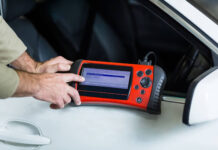Indeed, more than 400,000 Tundra trucks were recalled by Toyota due to the failure of the reverse light. Toyota Recalls applies to Tundra and Tundra Hybrid models manufactured between 2022 and 2025, addressing a critical reverse light failure. Moisture might be getting into the reverse light assemblies, causing them to malfunction. Visibility will drop, especially during low-light conditions, resulting in increased chances of an accident. To remedy this problem, Toyota will offer the necessary free repairs to concerned owners, thus ensuring safety and legality.
Cause of Recall
There is a problem with the recall that has to do with moisture getting into the reverse lamp versions. Eventually, water can collect in the lights and cause a complete failure to occur. If both lights stop working, then drivers will be unable to see behind them when reversing. The truck would not be apparent to other people or vehicles that it is moving backward. Thus, it dangerously increases the possibility of collisions. Since the problem is one of the most critical issues regarding safety, Toyota is very observant and is doing things to resolve it.
Also read: 2026 Toyota RAV4 Hybrid Revealed: Specs, Features & Design Upgrades
Affected Models and Repair Process
Toyota has claimed about 443,444 vehicles affected by this particular recall. The models include the 2022-2025 Toyota Tundra and the 2022-2025 Tundra Hybrid. For free repairs, owners can bring their vehicles to Toyota dealerships. Technicians are set to replace the reverse light assemblies and repair the possibly corroded wire harnesses where necessary. Furthermore, Toyota shall be notifying owners by 30 June 2025. Since safety is a priority, the company urges these owners to have their repairs scheduled timely manner as this will avert potential dangers.
Safety Concerns and Risks
Reverse lights are pretty critical safety devices in a vehicle. They help drivers see obstacles while reversing and alert others to the vehicle’s movement. Without functioning reverse lights, drivers face higher accident risks, especially in dark environments. Therefore, this recall by Toyota is meant to prevent potential crashes and secure road safety. The National Highway Traffic Safety Administration (NHTSA) began matching words more quickly with actions to lower accident risks as caregiving develops further in safety.
What Owners Should Do
Toyota is urging affected owners to book an appointment for repairs at the earliest opportunity. For vehicle recall status inquiries, owners may visit Toyota’s recall website, input their VIN, or call the Toyota customer service line at 1-800-331-4331. Because timely action may affect results, owners must act quickly to ensure the ongoing safety and compliance of their vehicles.
Toyota’s Commitment to Safety
Toyota cars have a long reputation for being reliable and safe. As a result, many recalls over the years have been undertaken to rectify manufacturing defects, thus enabling higher customer satisfaction. This particular recall, again, supports Toyota in being proactive in safety measures and in being sufficiently trustworthy by customers. Such free repairs show Toyota is committed to its safety standards. Customers are informed by Toyota that all future models will be tested better to prevent moisture-related failures.
Effect on the Industry
Toyota Recalls for vehicles are common within the automotive industry, and it is not only Toyota that has to deal with these vehicle recall problems. Other automakers, such as Ford, Chevrolet, and GM, have announced recalls of their vehicles in the past few years due to faults relating to lighting and electrical failures. This all shows the importance of quality control within the company and the improvement that is needed within vehicle designs. However, the proactive approach taken by Toyota is to ensure that the owners would have immediate service, repairs for this problem, and certainly be confident in their vehicles.
Also read: Ford Recall 2025: Over 273,000 SUVs Affected by Rearview Camera Defect
Conclusion
The recall by Toyota for over 400,000 Tundra trucks accentuates the need for vehicle safety and maintenance. The reverse light failure proved to be potentially hazardous. Nevertheless, the company is employing expedient measures to have that fixed. Owners must act soon to ensure their vehicles are kept safe and functional. By rectifying this default, Toyota strengthens its commitment to driver safety and reliability. Toyota’s actions regarding this matter describe the commitment to customer satisfaction and the long-term reliability of a car.








